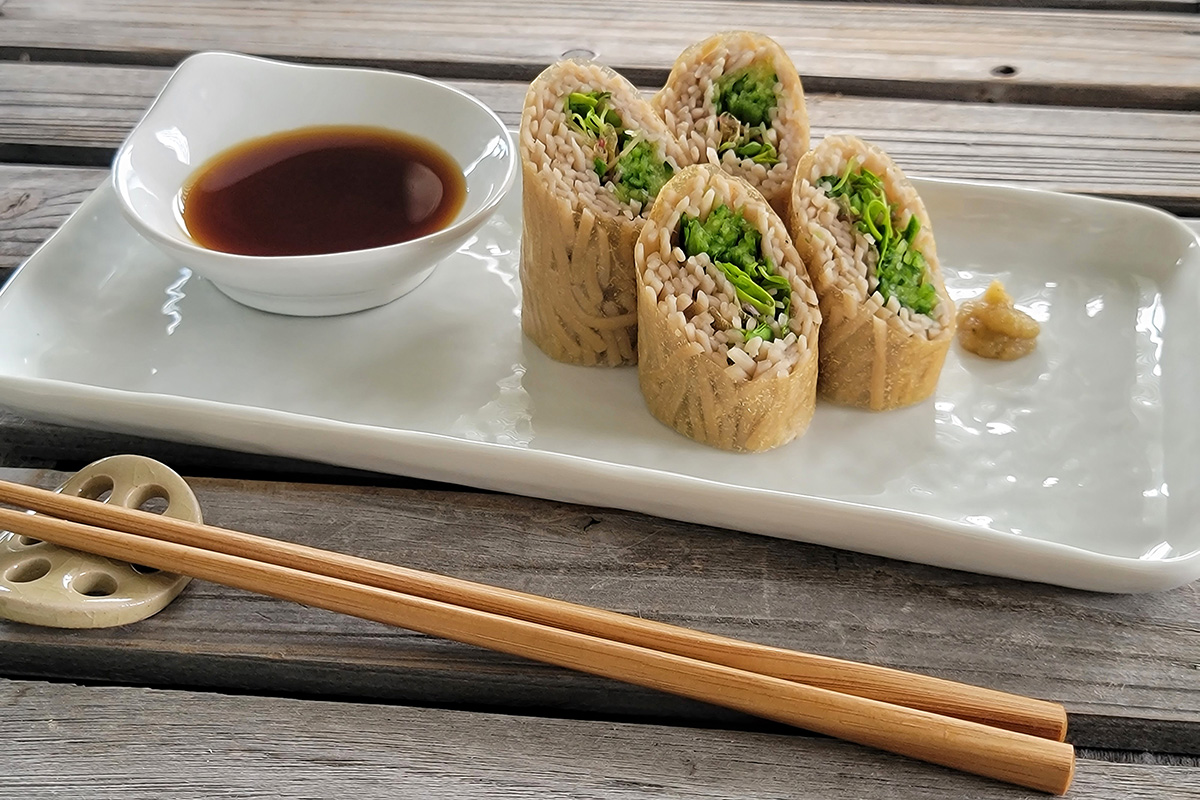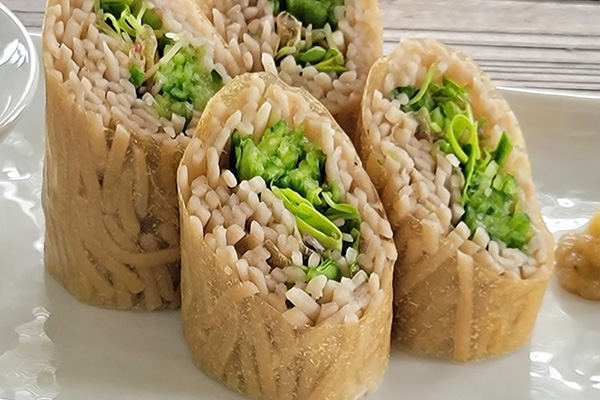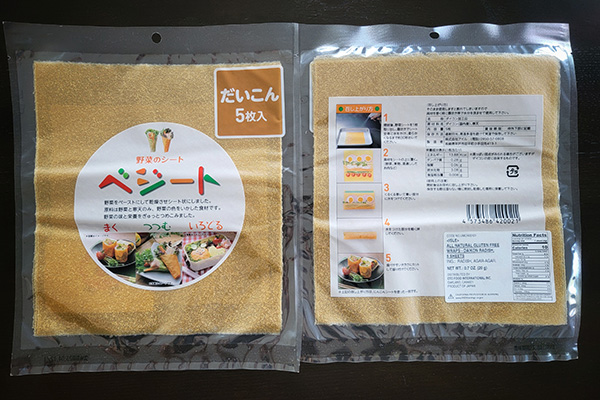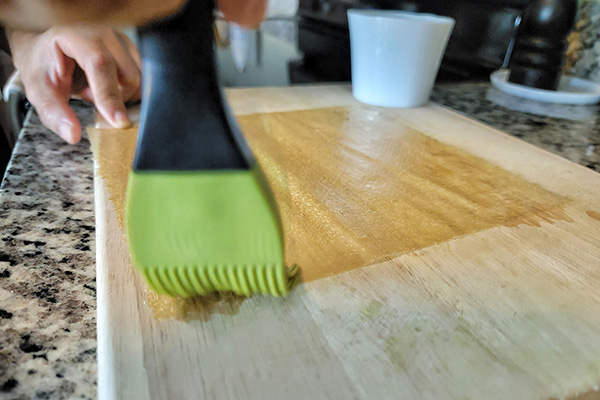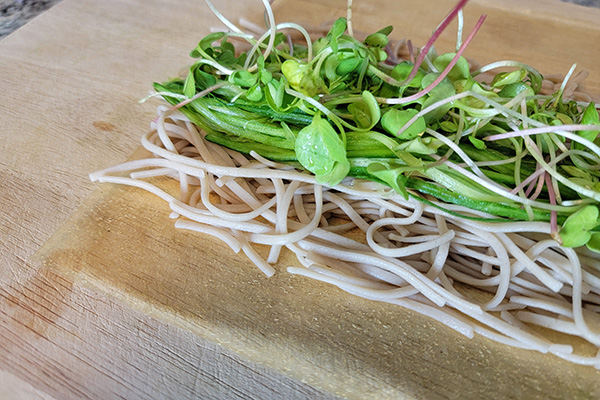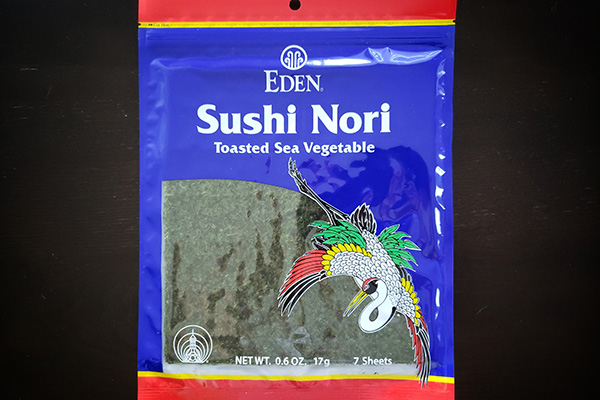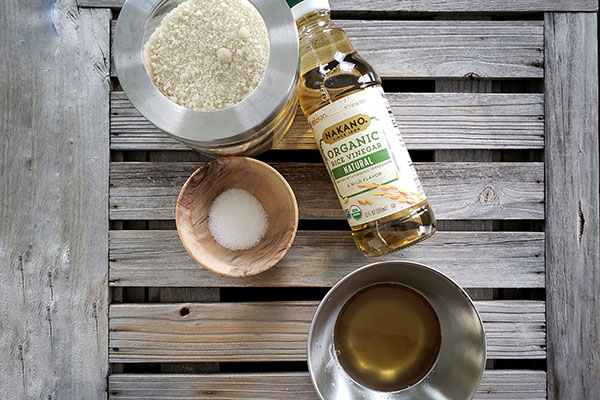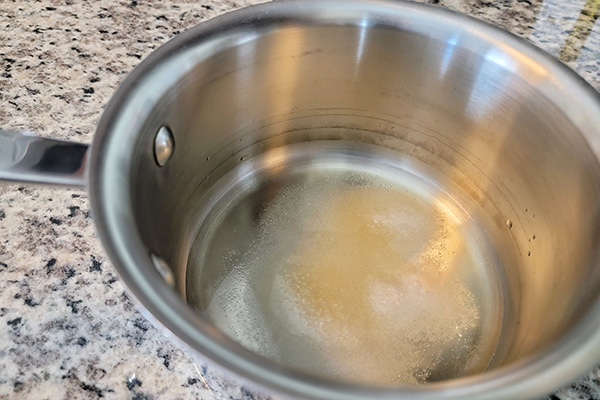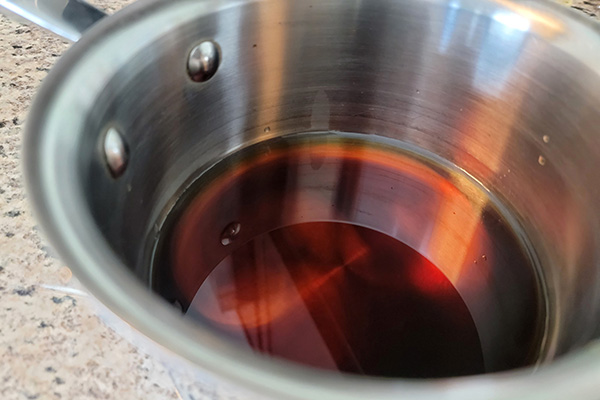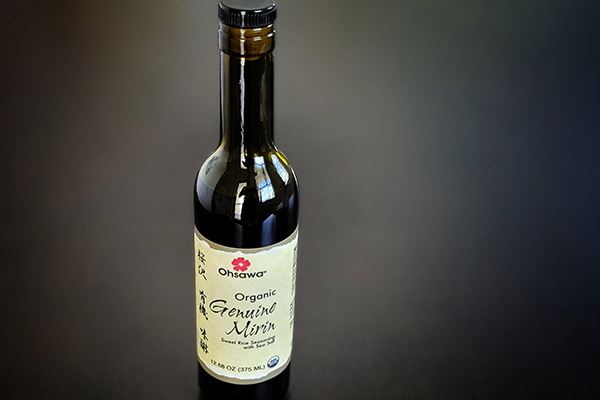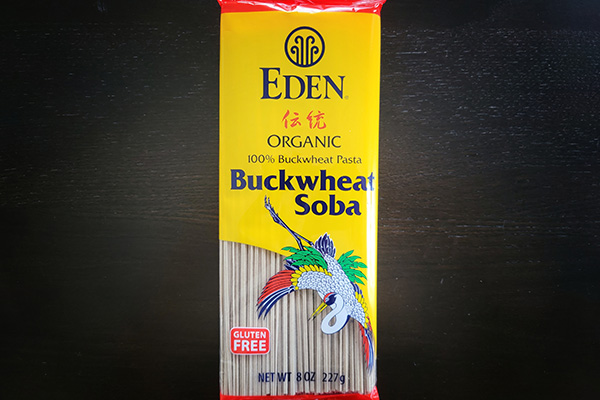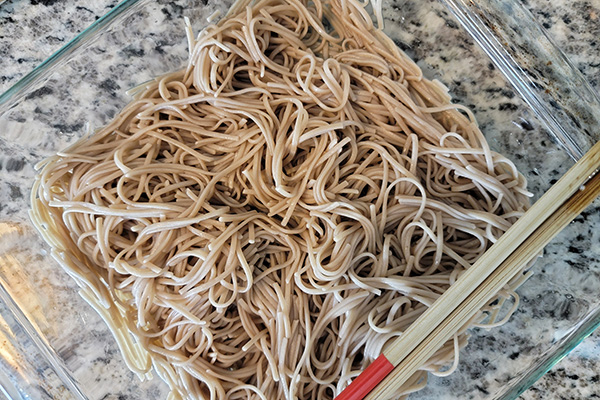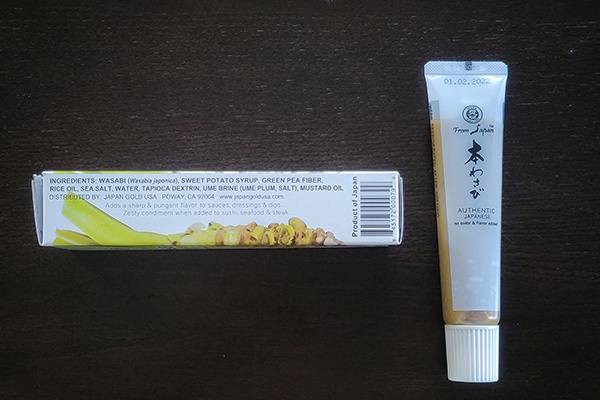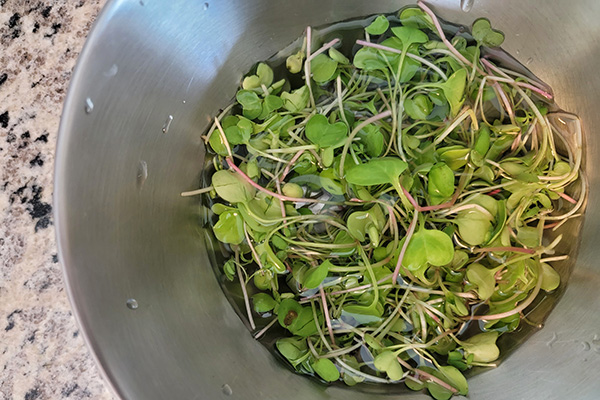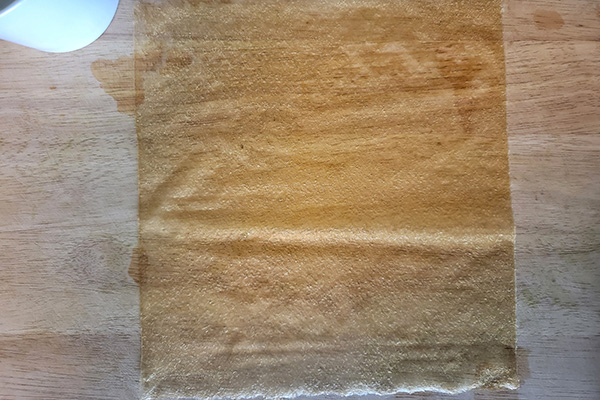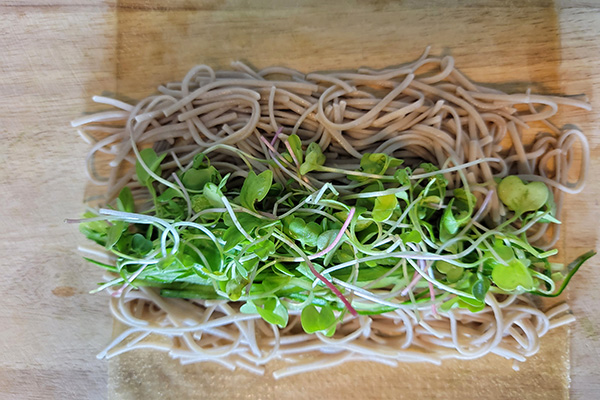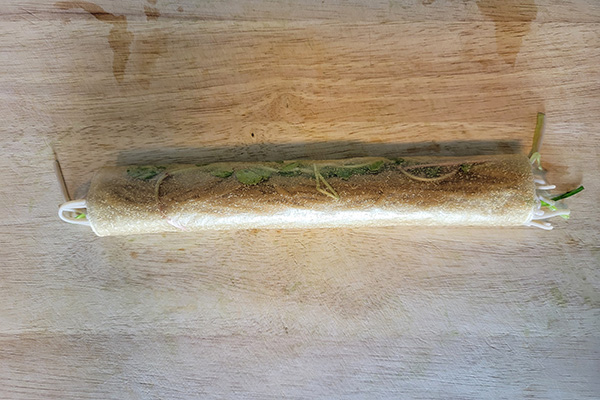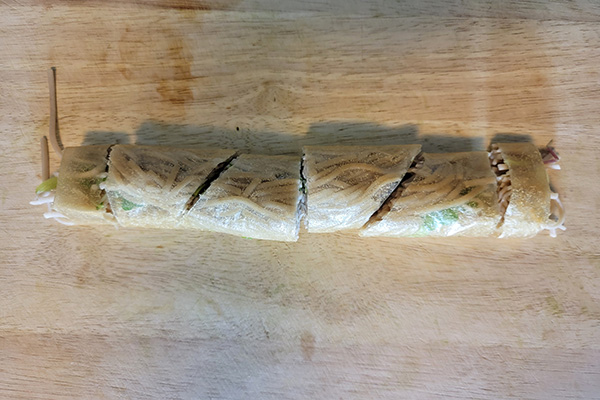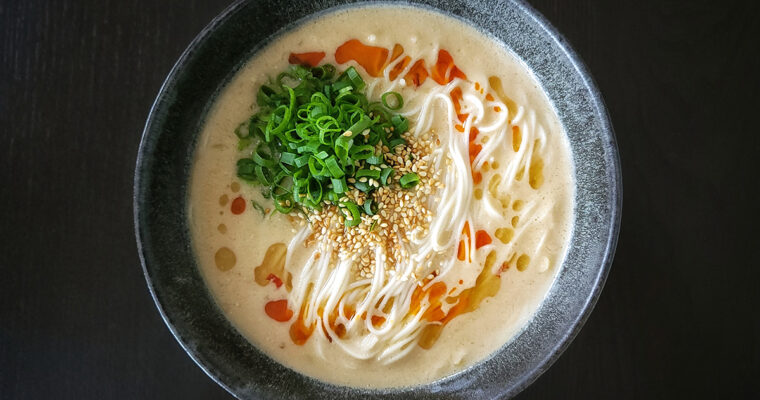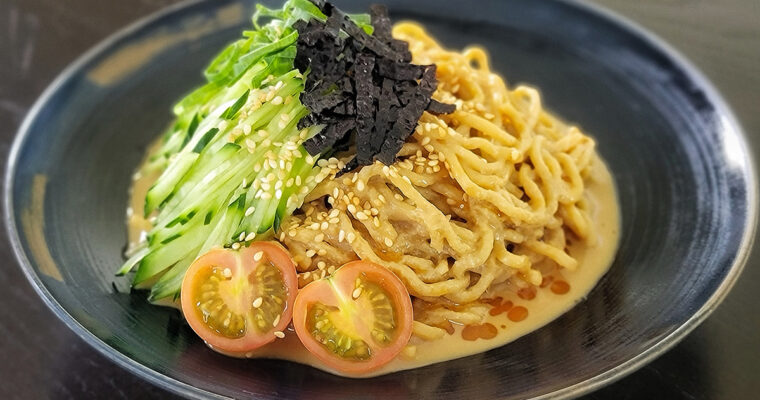Last Updated on June 3, 2023
[ベジートそば寿司]
If you are looking for another vegan “sushi” option, try this one! Soba Sushi Roll is a different kind of sushi that’s not made with rice. Yes, you can make “sushi” with soba noodles! What’s very special about this roll is the vegan & GF veggie wrapper! You’ll love this healthier option when you crave sushi next time.
What’s Soba Sushi?
I enjoy introducing Japanese food you may never knew that existed! Soba sushi is one of them.
It’s not a traditional sushi that you’re familiar with but I’m not an original creator of this type of dish. Although, the Japanese people don’t eat soba sushi on a regular basis, it’s actually an authentic Japanese style “sushi” but made with soba noodles instead of rice. In Japanese we call it sobazushi [そば寿司] which literally means “sushi made of soba.”
I don’t know the origin of the dish and I couldn’t find any trusted source of information, either. All I know is it works and tastes great! I love regular sushi (vegan sushi to be clear) but it’s fun to change things up once in a while. Not only that, swapping to soba can be a healthier alternative for those who are into healthy cooking!
Authentic soba sushi is rolled with a regular nori sheet that you use for making sushi. This one is different because it’s wrapped in a vegetable sheet!
The Wrapper
The particular wrapper that we used is called VEGHEET from Umami Insider (NOT sponsored!) It’s all natural, vegan and gluten-free! It was my first time using it and honestly, I didn’t have much expectations…well, that changed as soon as I tasted it!
One package contains 4-5 sheets (depending on the flavor) made with real vegetable and agar-agar. Yes, only two ingredients! The one I used for this recipe is the daikon radish flavor.
The color is lightly brown and each sheet is translucent and paper thin. The size is the same as regular sushi nori sheet so it’s easy to use as an alternative to make sushi rolls but not limited to. You can also wrap fresh veggies to make something similar to summer rolls using Vietnamese rice paper summer rolls. It’s the same concept. You damp the dry sheet a little bit then it’s ready to roll!
It has pros & cons. The pros is that unlike the Vietnamese rice paper, it’s easier to handle when rolling because it doesn’t get sticky. Another pros is that compare to rice paper, it has a significantly bold flavor, the flavor of real veggies! Let’s be real. No offence, but rice paper tastes like nothing.
The daikon radish one that I used tastes and smells just like real daikon. You can actually see the fiber in the sheet, too. To my surprise, it had a hint of natural sweetness to it which is from the natural taste of daikon radish. It’s amazing how thin sheet as such can contain that much flavor!
The cons is that it has less flexibility than the rice paper and and it may rip if it’s too wet. But once you make a roll, it retains the shape pretty well. I notice that the less stickiness makes it a bit difficult to truly seal the end but workable!
A Little More About VEGHEET
I wanted to know more about the VEGHEET so I did a bit further research. It’s made by the Japan-based company called ISLE. I hopped on the company’s website (in Japanese.)
In summery, VEGHEET is a sustainable product that has won many awards. It’s made from “ugly” or “non-standard sized” veggies that was going to be discarded which could have caused massive unnecessary food waste. According to the company, it’s also dense in nutrients and has a long shelf life (2 years before opening) so they’re working on promoting VEGHEET as an emergency food supply for natural disasters.
You can enjoy VEGHEET in a couple of different ways. It’s edible without cooking it so you can eat as-is which I did for this recipe. If you want to make healthy spring rolls you can cook it with a little to no oil. I actually made tofu spring rolls and they were delicious! You can also dissolve in water which makes it gelatinous consistency due to the agar-agar.
The website states that soon it will be available globally on Amazon. Meanwhile, if you live in US or Canada, check it out Umami Insider!
Alternative for VEGHEET
You can still enjoy this recipe even if you can’t get VEGHEET. Try making this recipe with regular sushi nori like this one. Actually, that will make a traditional soba sushi roll!
Either way, it’s a great vegan & potentially GF recipe (disclaimer: please check the label of each ingredient at your own risk to make sure that it’s truly suitable for GF.)
The Ingredients
Here is the list of ingredients to make this healthy “sushi” roll alternative!
Sushizu (Seasoned Vinegar) * alternatively use bottled sushi vinegar of your choice
- Rice Vinegar
- Sugar
- Salt
Dipping Sauce
- Water
- Tamari for GF (or regular soy sauce)
- Mirin (check the label for GF)
The Rest
- Sushizu (or bottled sushi vinegar of your choice)
- Dried 100 % Buckwheat Soba Noodles
- English Cucumber
- Radish Sprouts (or other sprouts of your choice)
- 4 VEGHEET [daikon flavor] or regular sushi nori
- Wasabi (check the label for GF)
The Tips and Recipe Notes
Sushizu (Seasoned Vinegar)
You can either make your own sushizu or buy a bottled seasoned rice vinegar (or sold as “sushi vinegar”.) The easiest & convenient way would be buying the bottled one. But it’s actually really easy to make. I made the same one for making authentic & proper sushi rice and the same blend works for this recipe.
All you need is rice vinegar, sugar and salt then blend all together. When preparing one for sushi rice you don’t even need to cook the sushizu blend because the warm rice will melt the sugar & salt. However, in this recipe, soba will be shocked with cold water before seasoning so cooking of the sushizu blend will be necessary.
Just combine the three ingredients in a small sauce pan and cook over medium heat until sugar & salt are dissolved. Then remove from the heat and set aside to cook down.
The recipe makes a little more than enough sushizu to season the soba noodles. I used 2 tbsp however I listed as 2-3 tbsp in case you want to season heavier to adjust to your taste preference. Keep in mind that the dipping sauce will be served with the dish so you don’t want to overdo.
If you aren’t using the dipping sauce, you may want to use more than 2 tbsp.
Dipping Sauce
Typically, you want to dip in tamari or soy sauce for sushi. For the soba sushi roll, I wouldn’t recommend using them because they overpower the natural flavor of buckwheat.
Instead, try this dipping sauce! It’s a blend of water, tamari and mirin. As you can imagine, the saltiness is soften because it’s diluted with water but a hint of sweetness is present because of the mirin.
Just like sushizu, you need to cook on the stove until the alcohol from the mirin evaporates. Mirin contains alcohol which is typically derived from the fermented rice however some are from wheat. As far as I know, most of them are made with rice therefore it’s GF. Please check the label and use your own judgement.
I use Ohsawa Organic GF Tamari from Gold Mine Natural Foods.
For mirin, I use Ohsawa Organic Genuine Mirin also from Gold Mine Natural Foods. It’s one of a few high quality organic mirin that’s not made with corn syrup. As far as I can see, the alcohol is rice-based and I don’t see any wheat product listed on the bottle however I can’t attest if it’s truly GF. Please check with the company for more information.
Alternatively, you can serve this dish with as-is with no dipping sauce.
Soba Noodles
Soba is another potentially non-GF item. Many soba noodles are a blend of 80 % buckwheat flour and 20 % regular wheat flour which I actually enjoy that option better. However, I opted for 100 % buckwheat soba noodles to stick to the idea of making this dish as GF.
I bought this organic 100 % soba noodles (dried) from Eden Foods. There are other products out there that you can buy and I don’t think they are difficult to find. Again, make sure to check the label and use your own judgement.
Wasabi
The last item here that you want to check for GF is wasabi.
This All-Natural Wasabi from Gold Mine Natural Foods is certified GF (according to the company.) I love this product because it’s made of authentic real wasabi grown in Japan and no horseradish added! Not to mention, there’s no artificial colors and flavors and it’s non-GMO.
VEGHEET
You can find the main ingredient, VEGHEET All-Natural GF Wraps (Daikon Radish), from Umami Insider. The one I used for this recipe is daikon flavor which works perfectly for the dish. They also have kabocha (Japanese pumpkin/squash) flavor in case you’re interested!
Choice of Fresh Veggies
I used cucumber and radish sprouts to add some fresh bites & crunch. For the cucumber, I julienned English cucumber using a julienne peeler and squeeze excess water out so the roll won’t get soggy. You can also julienne by regular cooking knife.
Radish sprouts are my go-to sprouts! I love the spiciness and they go very well with Japanese food.
How to Roll
You can think of the same way as making sushi rolls. The only difference is that I didn’t even use a bamboo sushi rolling mat and it was fine! Here is how to use VEGHEET and roll.
On the back side of the package, it says to water spray a sheet to soften (otherwise it will tear.) I didn’t have a spray bottle so I simply used a pastry brush to wet (damp) the sheet with water and it worked just fine. Be careful not to wet it too much to avoid breakage.
Then place the seasoned soba, cucumber and radish sprouts just like making sushi rolls. Roll it tight (like making sushi) and leave the last 0.75 inch (2 cm) at the top. Right before rolling all the way, apply a dap of water at the top end then roll it to seal.
Leave it with the sealed side down and set aside. Then cut each roll into a bite size pieces (6-8 pieces.)
Feeling Inspired?
Check out our popular vegan sushi recipes that you don’t wanna miss!
King Oyster Mushroom “Fish” Nigiri Sushi
Sumeshi (Vinegared Sushi Rice)—a proper way to make sushi rice!
Soba Sushi Roll
Ingredients
Sushizu (Seasoned Vinegar) * alternatively use bottled sushi vinegar of your choice
- 3 tbsp rice vinegar
- 1 1/2 tbsp sugar
- 2 1/2 tsp salt
Dipping Sauce
- 1/4 cup water
- 1/2 tbsp tamari for GF or regular soy sauce
- 1/2 tbsp mirin check the label for GF *
The Rest
- 2-3 tbsp Sushizu or bottled sushi vinegar of your choice *
- 8 oz dried 100 % buckwheat soba noodles (14 oz / 400 g cooked) *
- 6 oz English cucumber julienned
- 1 oz radish sprouts or other sprouts of your choice
- 4 VEGHEET daikon flavor or regular sushi nori
- Wasabi check the label for GF *
Instructions
- Prepare the Sushizu (optional.) In a small sauce pan, combine rice vinegar, sugar and salt. Cook over medium heat until sugar is completely dissolved. Remove from the heat and set aside to cool down.
- Prepare the dipping sauce. In a small sauce pan, combine water, tamari and mirin. Cook over medium heat until gentle boil or until mirin’s alcohol is cooked off. Remove from the heat and set aside to cool down.
- In a large pot, start boiling water for cooking soba noodles. Once it is boiling, cook soba noodles for 6-7 minutes (or follow the directions on the package.) Do not overcook! Once the noodles are cooked, use a colander to drain and rinse under running water to remove starch. Shake off the excess water and transfer to a large shallow dish (I used a baking dish.)
- Add the sushizu or your favorite sushi vinegar (seasoned vinegar) over the cooked soba. Start with 2 tbsp then add more if needed. You may not need all the sushizu/sushi vinegar. Adjust the amount to your preference. Toss until well coated. Let it stand for a couple of minutes so the soba soaks up the flavor.
- Assemble. Using VEGHEET: Place a sheet of VEGHEET on a cutting board. Spray water (or apply water with pastry brush) to damp the sheet. Let it stand for 30 seconds. Portion each ingredient into 4 to 5 equal parts. Place the seasoned soba, cucumber, and radish sprouts. Roll it tight (like making sushi) and leave the last 0.75 inch (2 cm) at the top. Apply a dap of water at the top end then roll it to seal. Leave it with the sealed side down and set aside. Repeat the process. Using sushi nori: Place a nori sheet on a bamboo rolling mat (or cutting board if you don’t have the mat.) Portion each ingredient into 4 to 5 equal parts. Place the seasoned soba, cucumber, and radish sprouts. Roll it tight. Leave it with the sealed side down and set aside. Repeat the process.
- Cut each roll into a bite size pieces (6-8 pieces.)
- Serve with the dipping sauce and wasabi.
Notes
- I make my own sushizu but you can substitute with your favorite sushi vinegar (seasoned vinegar.)
- 2-3 tbsp of sushizu (seasoned vinegar) per 14 oz / 400 g cooked soba should be enough to season. I used 2 tbsp and it was fine for my taste. Use your own judgement!
- For GF, be sure to use 100% buckwheat soba noodles. Many soba noodles are made with wheat flour.
- For GF, please check the label of wasabi and mirin which may contain non-GF ingredients!
